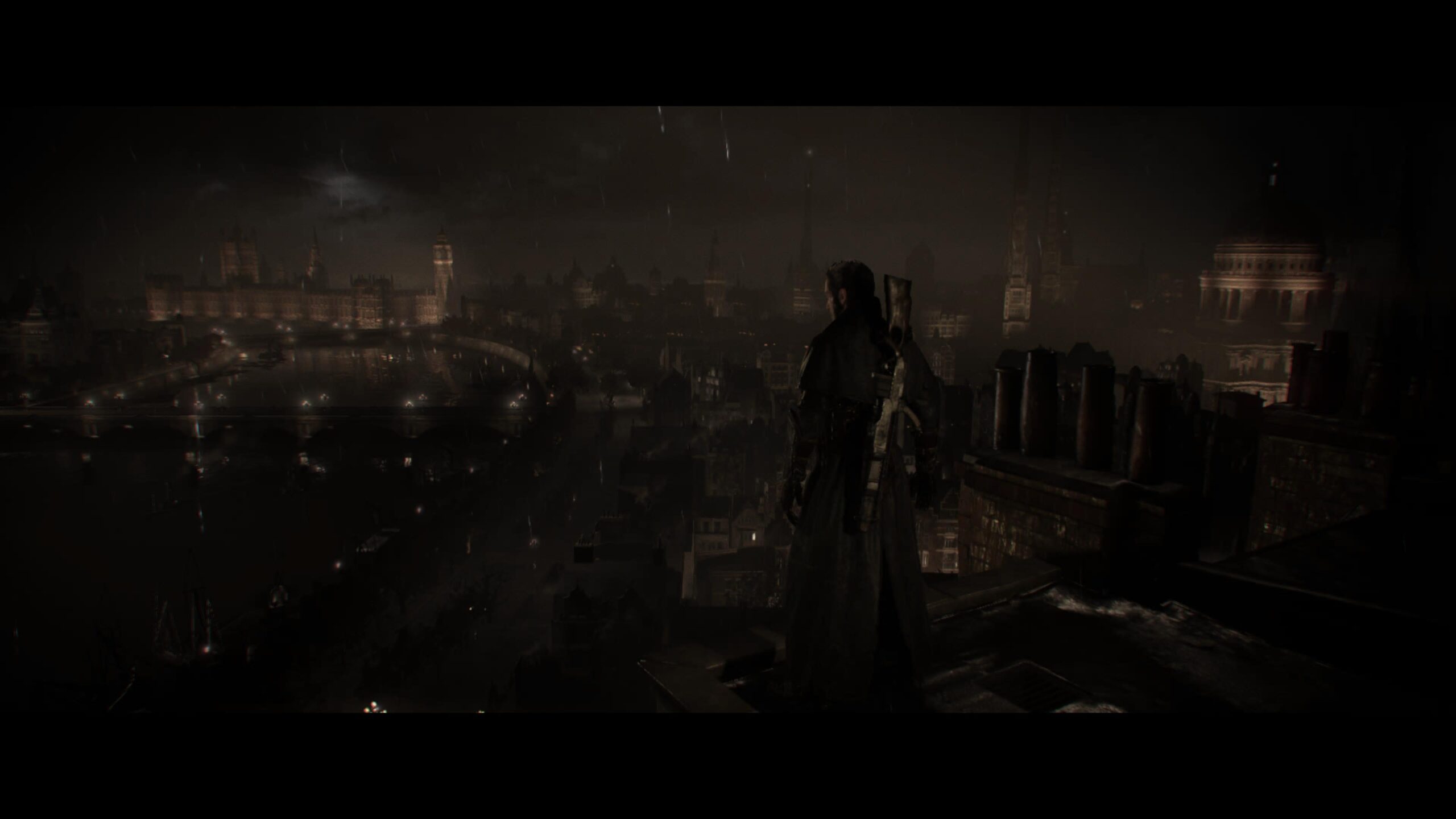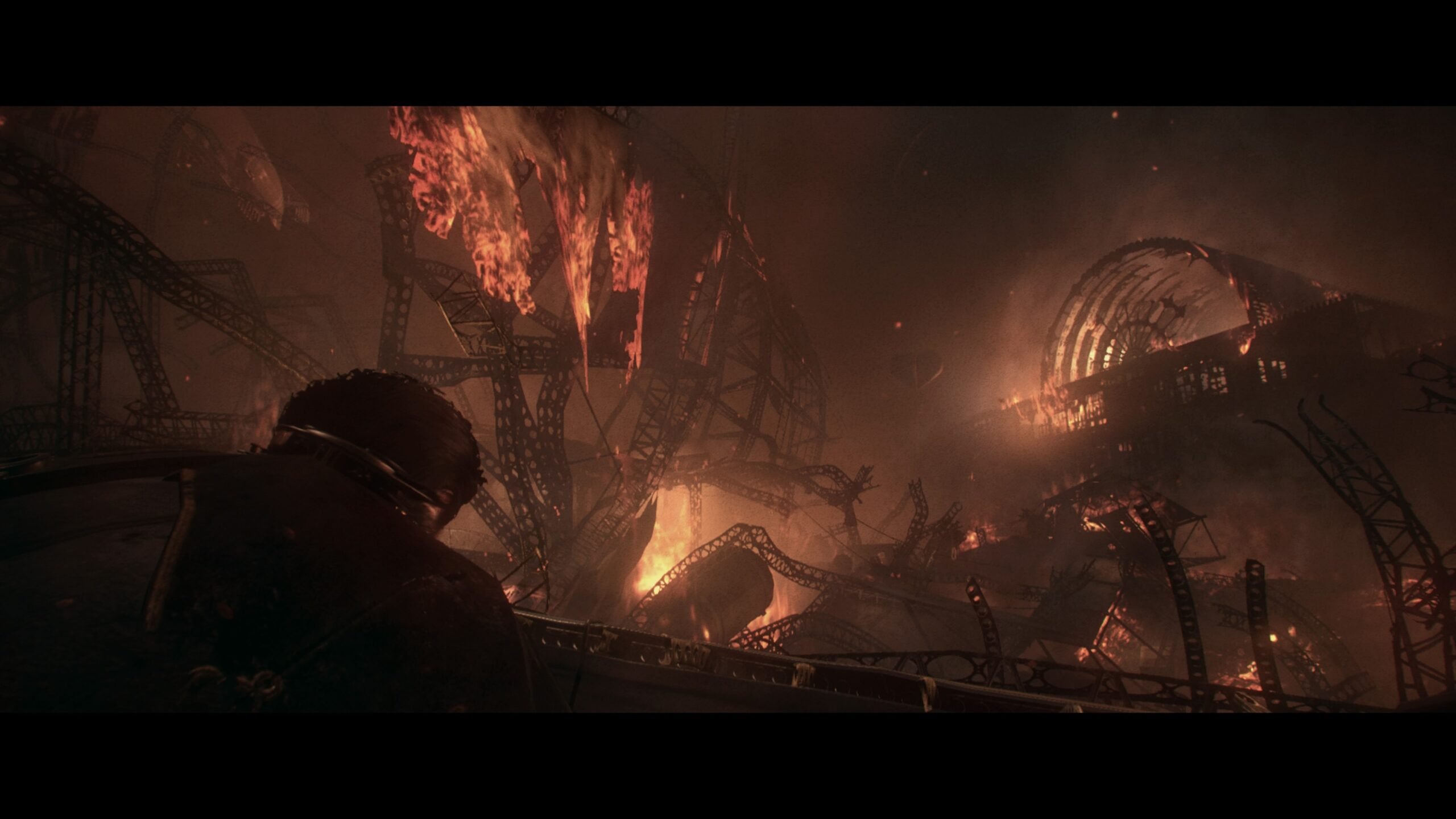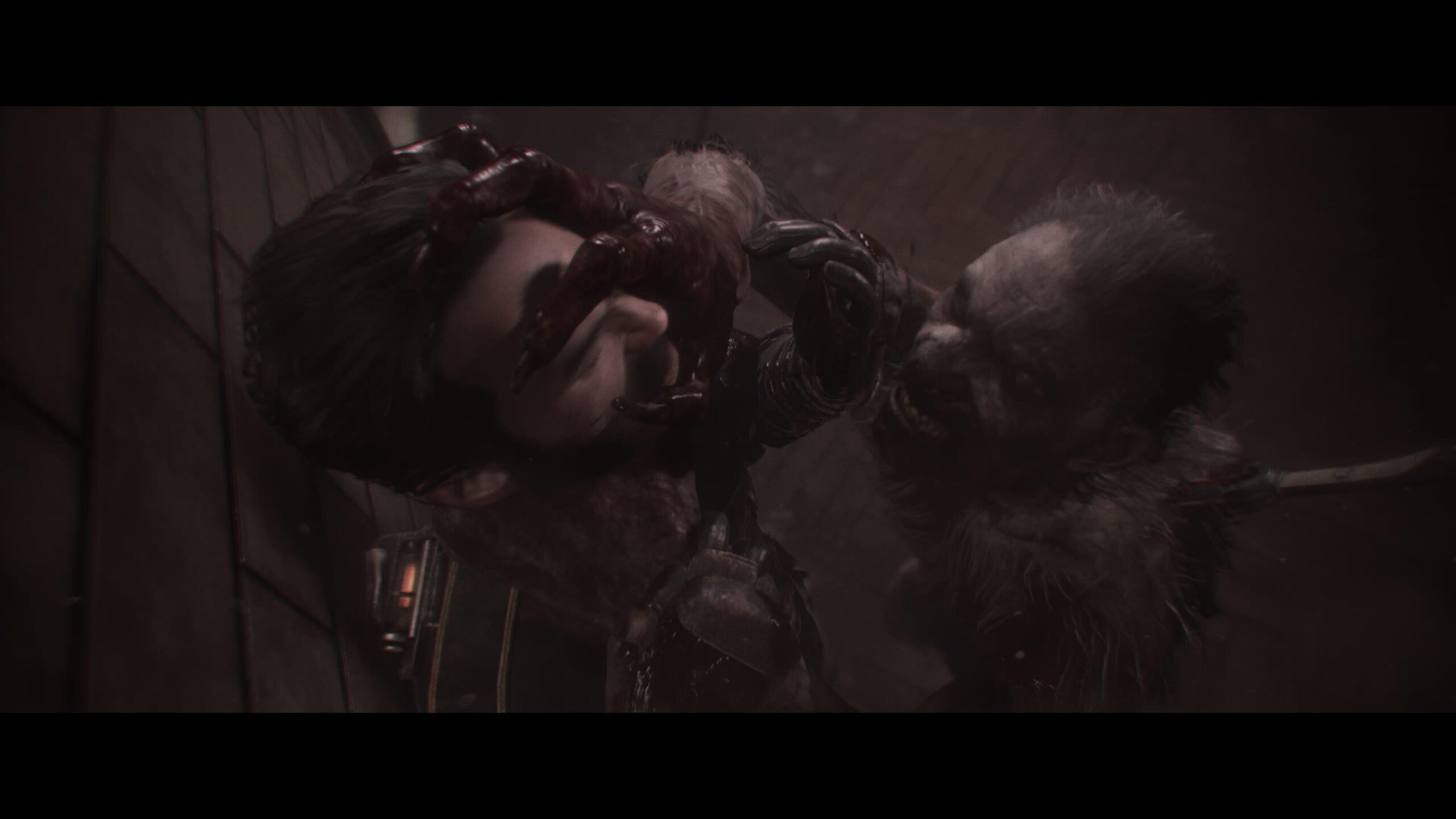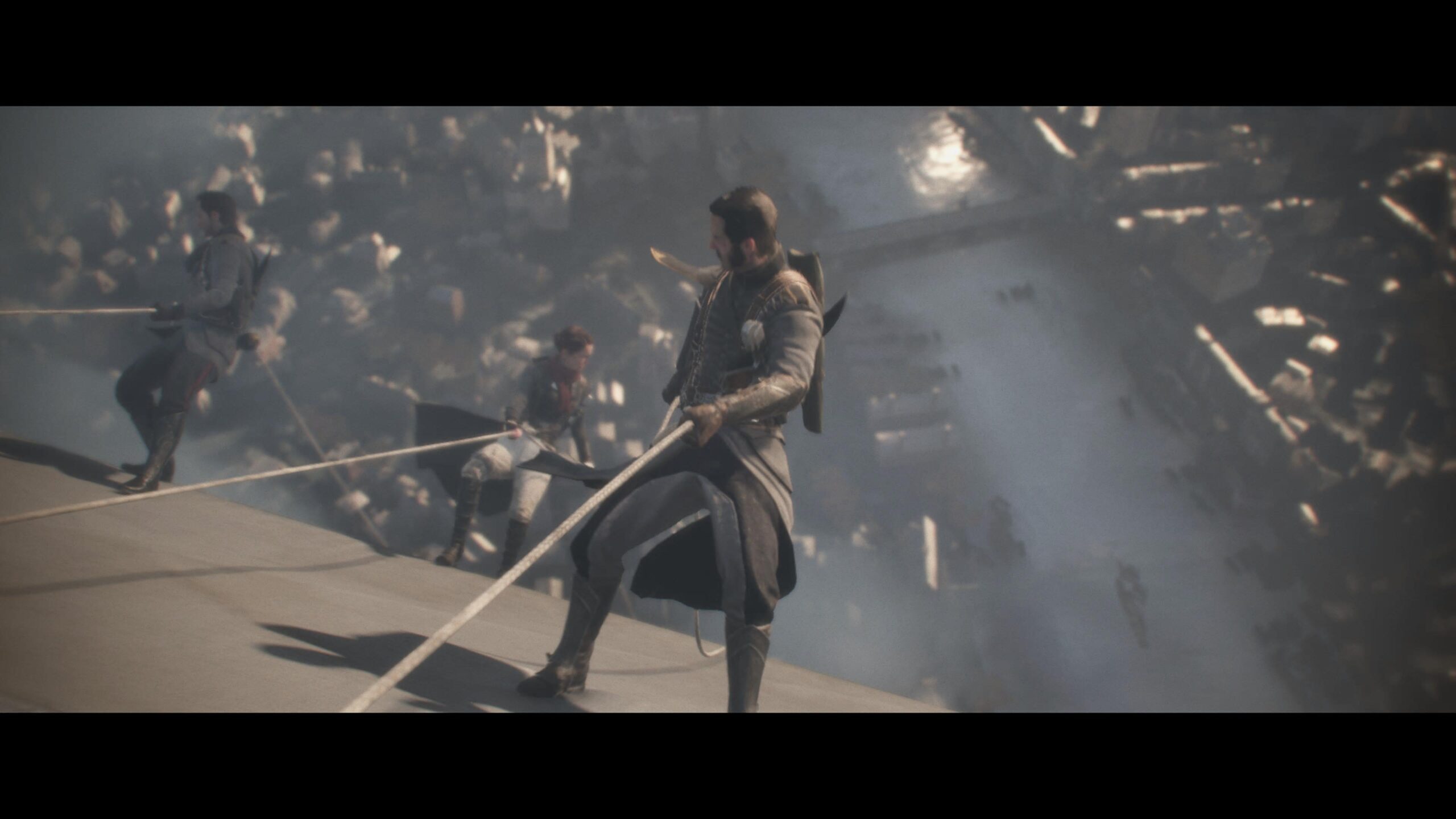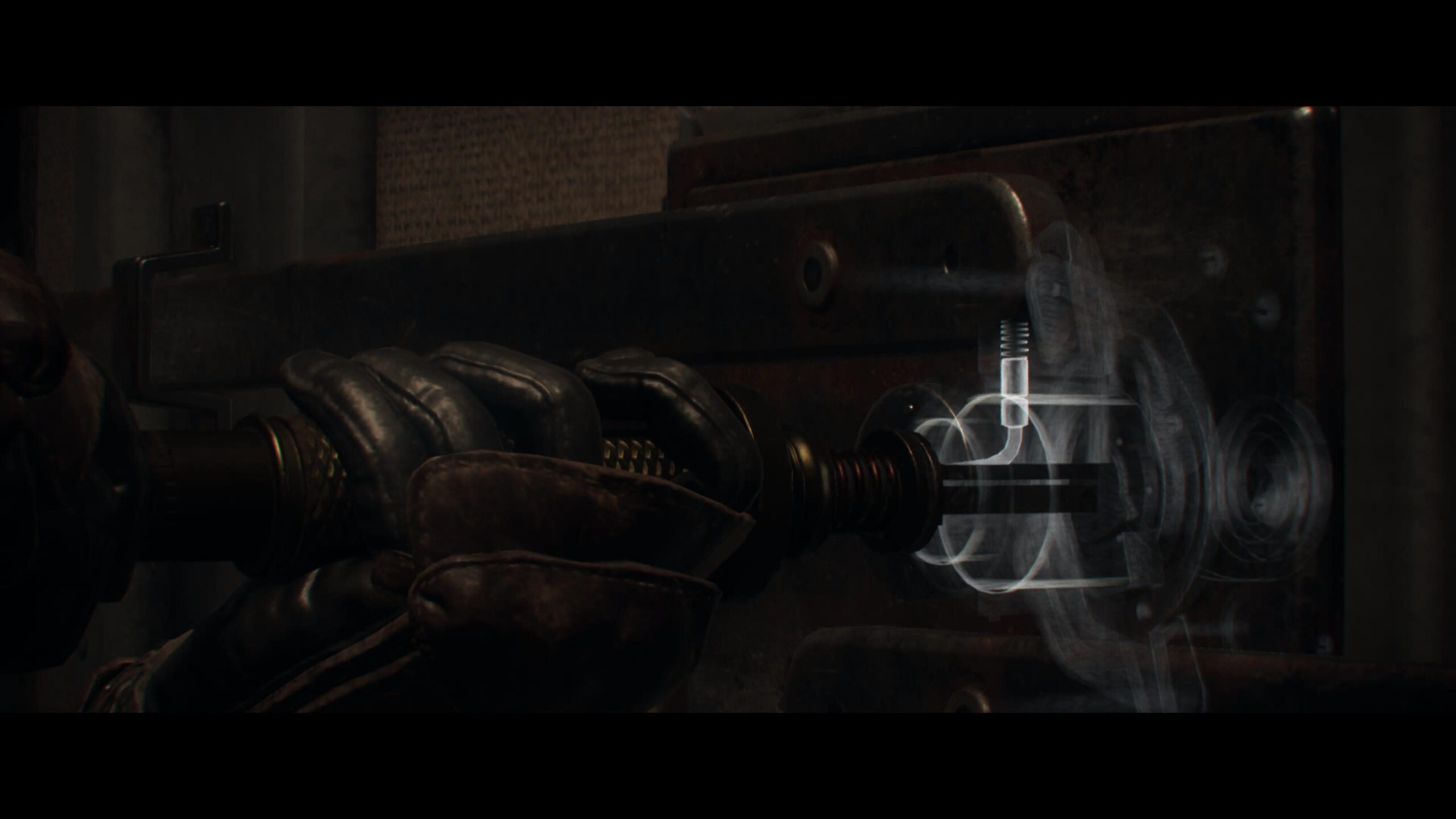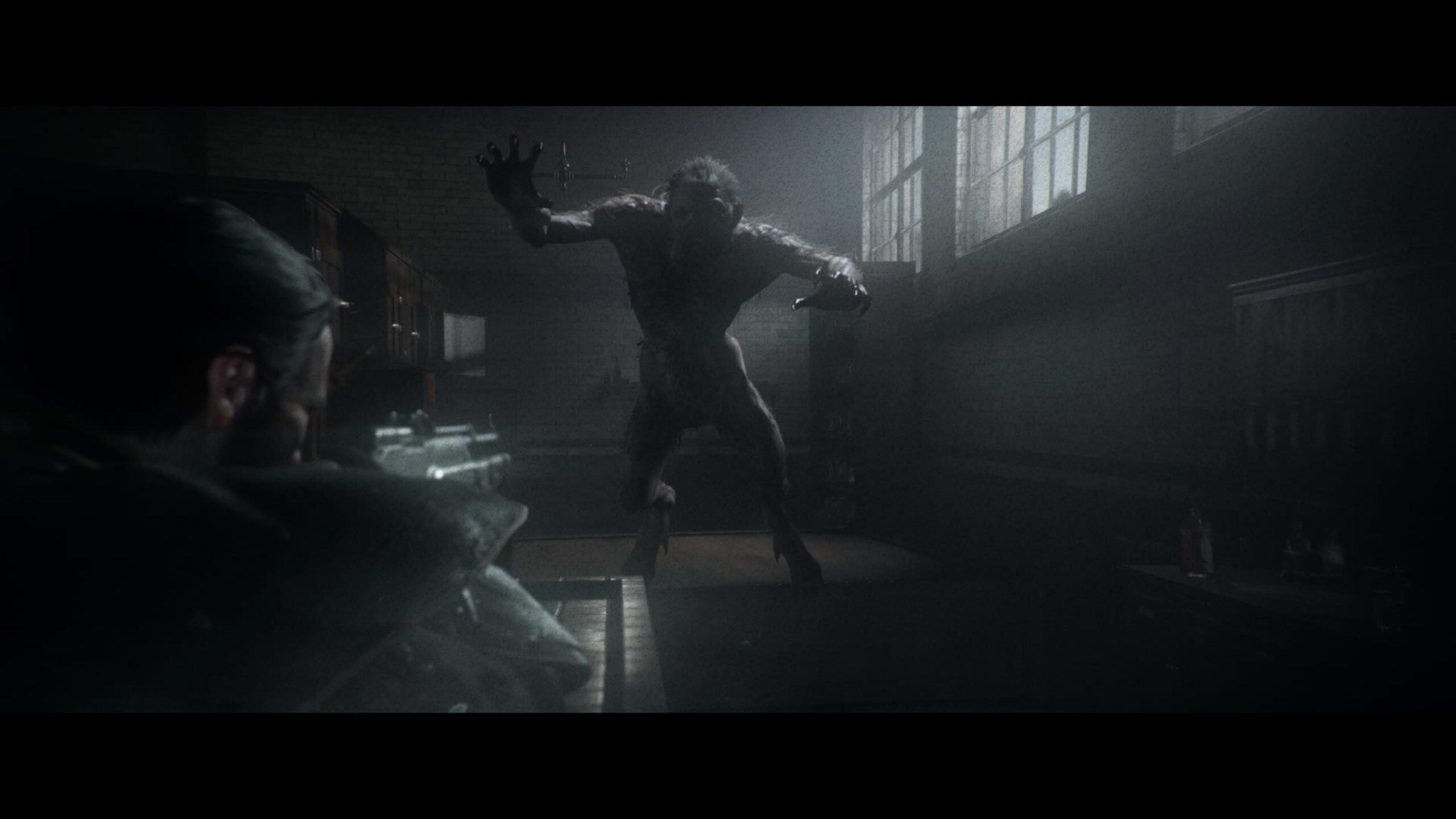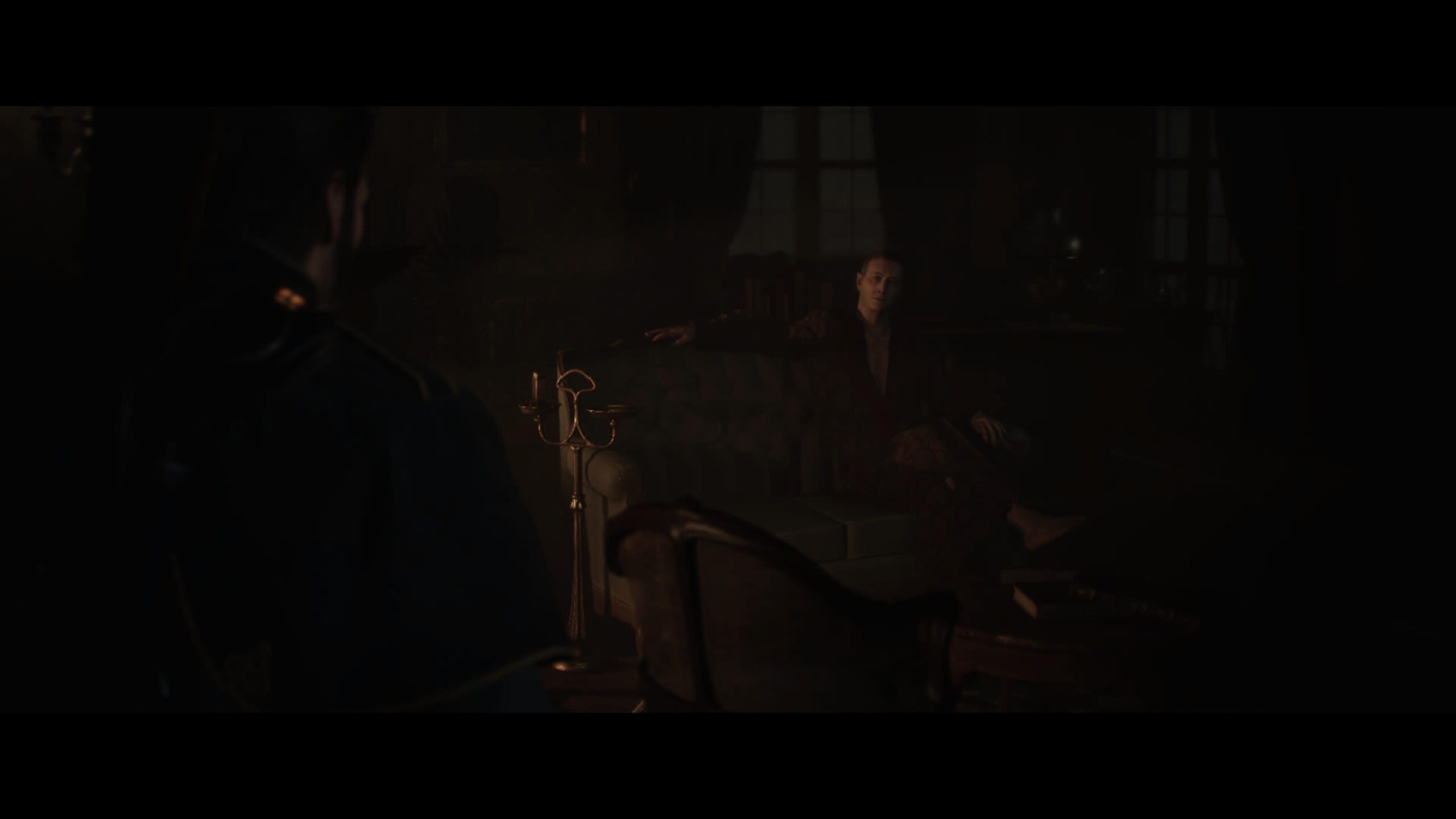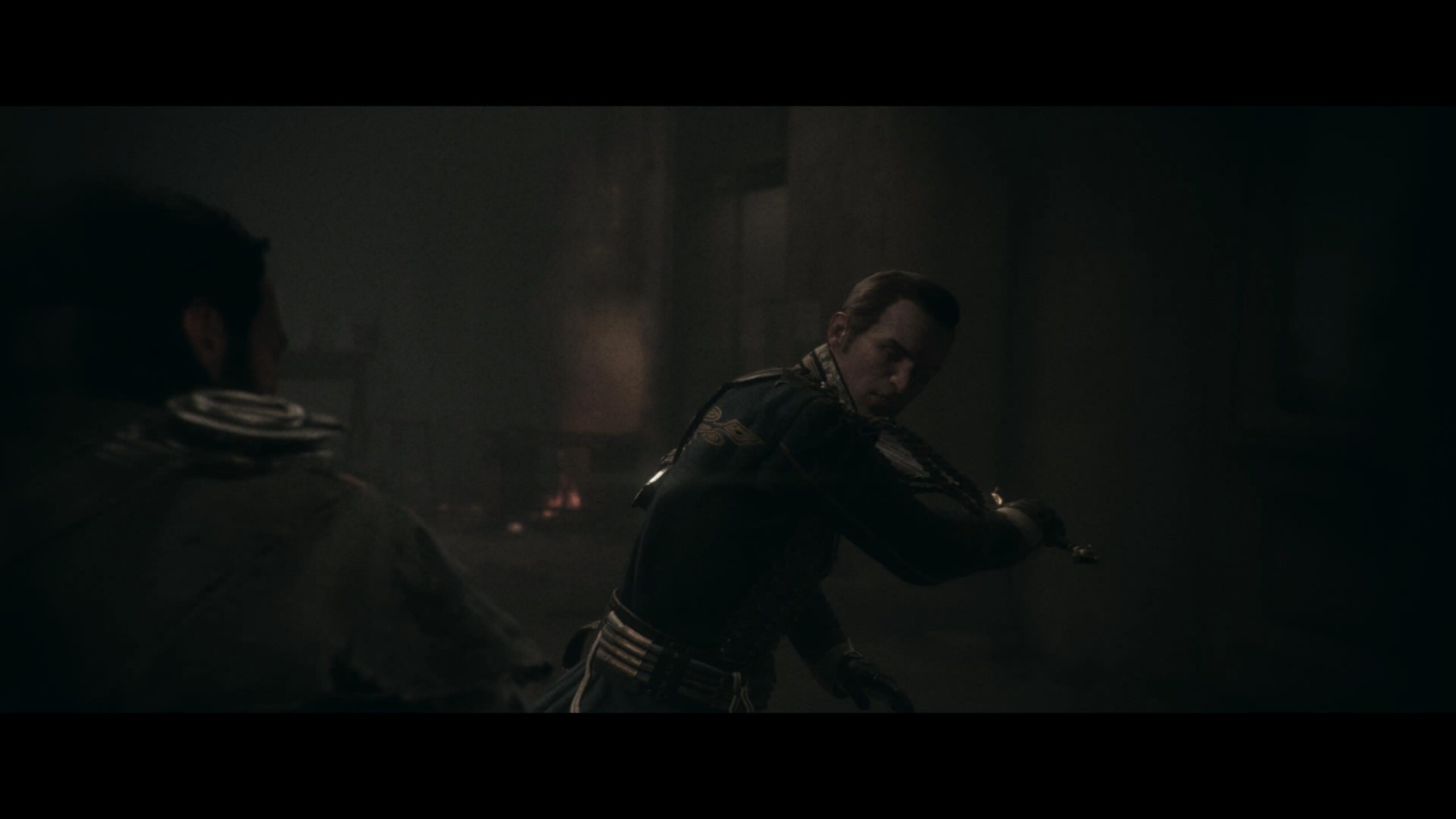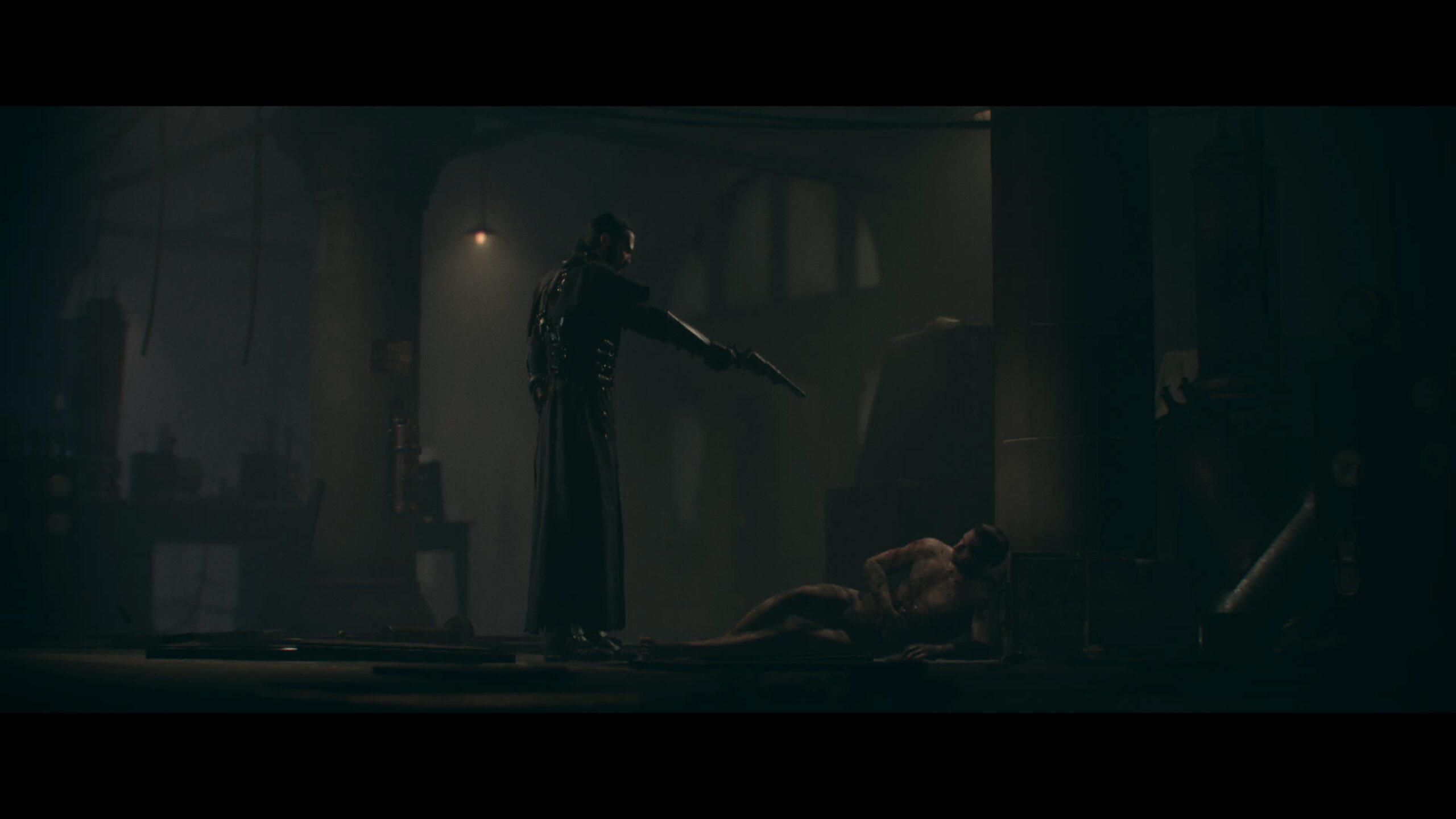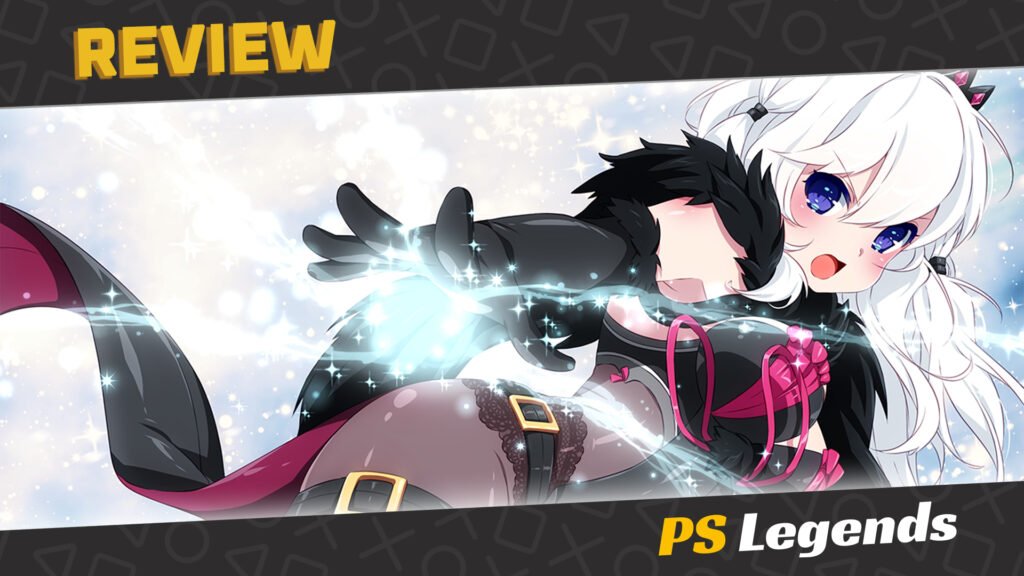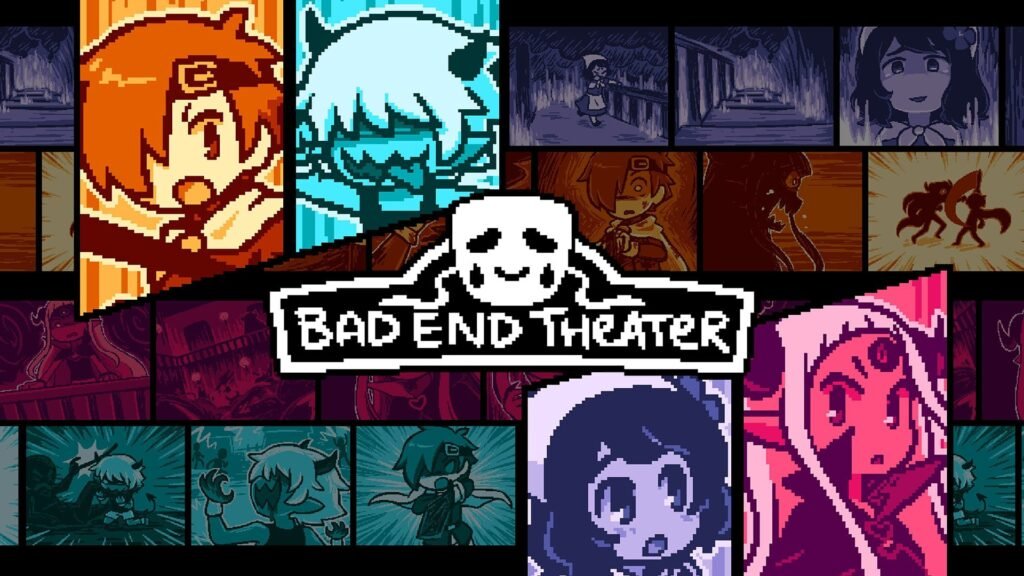The Order: 1886 was touted as one of the flagship exclusives of the PS4 era, under a rather recognisable game developer studio by the name of Santa Monica Studio! Whilst the game ultimately didn’t reach the heights of fame and stature that another franchise out of the studio did (for anyone unaware, that is the God of War franchise!) Is there still a lot to love from this Victorian gothic shooter?
On This Page
Introduction
Released in 2015 exclusively to the PS4, The Order: 1886 set out to be a cinematic masterpiece. Whilst it was met with middling reviews, all will agree that Sony Interactive Entertainment and Santa Monica Studio’s aim to develop a game that had a deep, immersive storyline laced with a cinematic style and feel was achieved! So, with that universal praise in mind, what is it that holds the game back from reaching the legendary heights of other Sony-exclusive titles?
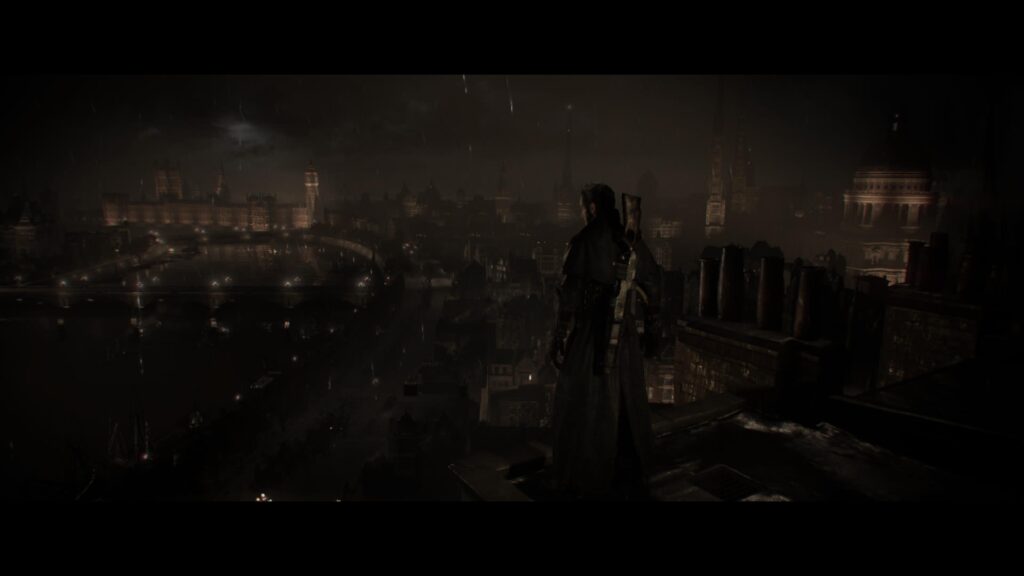
Story
As soon as you step into the game you’re met with the feeling you’re in a movie. With dramatic cuts and a 1st-person perspective a middle-aged man, Grayson, is being tortured in a London dungeon. In true dramatic tutorial fashion (as so often seen in these games), it turns out you play the role of Grayson and proceed to kill your torturers, before escaping from captivity underneath Westminster. After just about managing to escape being captured once more, we’re transported back several weeks to fully understand what has driven a respected Knight of the Order to such treason and madness, and the game truly begins.
You discover that Grayson aka Sir Galahad is (was!) one of the leading Knights of the Order, and is one of the most dedicated servants to the Order – which of course completely juxtaposes the 30 minutes of game you’ve played, prior. Naturally, you are immediately suspicious of everyone, and everything. A clever trope used often in cinema and used effectively in this game, too. Sir Galahad has served the Order for centuries, being kept alive and young by the mysterious Black Water – a magical concoction that when mixed with their blood, can be consumed to heal the most grievous of wounds, as well as granting inhuman long life. The clever mix of classic Victorian London, blended with a steampunk-gothic vibe of the Order and the alternative technology powered by Nikola Tesla and the likes, that exists in this world, it is a fascinating setting for a story like this and credit to the world-builders, it’s a very well thought out landscape.
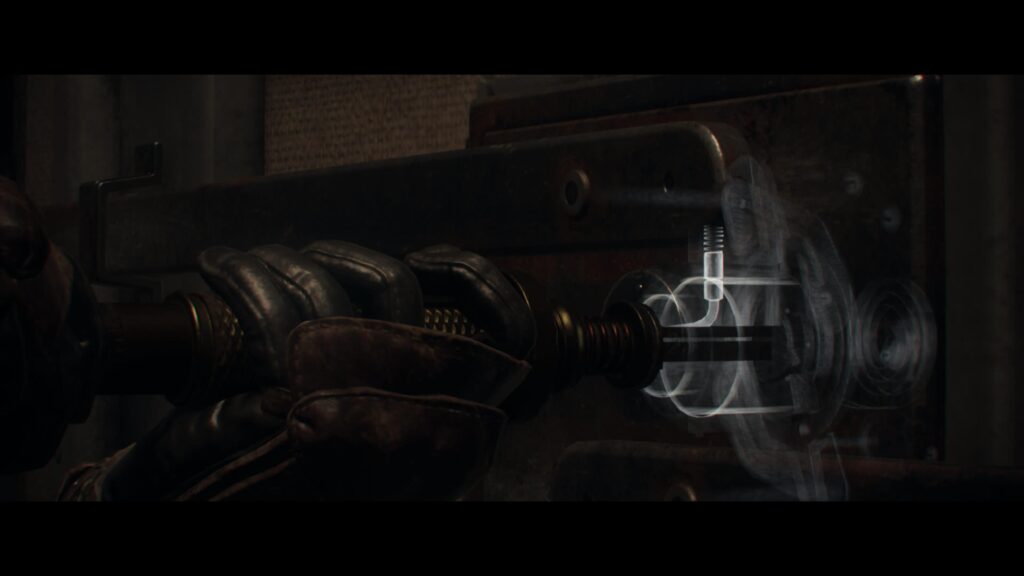
Throughout the ‘backstory’ chapters of the game (another nice story trope!) you’re also re-introduced to the swathe of faces atop Westminster shouting and pleading with Grayson to turn himself in. The most complex of relationships throughout the game is that of the newest Lady Igraine, Isabeau D’Argyll – once Grayson’s apprentice turned lover, they had to end their romance as she chose the Order. There’s still plenty under the surface there that rears its head through the course of the game! You also meet the Marquis de Lafayette, a French military officer who is Grayson’s latest apprentice, and quite the ladies’ man. What starts as a cheeky, flirtatious and distracted young stalwart, Lafayette’s journey explains the mysterious and rather unorthodox way that recruits are brought into the Order mid-way through the story.
These two often accompany Galahad on the early missions in the game and offer continual, albeit somewhat predictable protagonist exposition and progression, in the cliche cinematic ways that a ‘love interest’ and the ‘new guy’ do. The early part of the game also circles Sir Percival, who is Galahad’s mentor and old friend. Sir Percival is convinced there are goings on in the United India Company, the world’s leading trading company, and outside of his licenced missions is also undertaking additional recon and surveillance to try and determine what exactly that is… much to the frustration of the Order and in particular the head of the table the Lord Chancellor, who is the adopted father of Isabeau, and gives so many ‘DO NOT TRUST HIM’ vibes you just know there’s corruption in the ranks. (Without giving too much away, this is such a great character you only see in cutscenes, but he adds so much to the story progression and pulls the players in – great job by the writers!)
We also meet Alastair aka Sir Lucan, a fabulously dashing and calm presence, who is the sister of Isabeau, and also adopted by the Lord Commander. He begins on the sidelines, very much the ‘big brother’ role in the game to Isabeau, but as the story unfolds Alastair becomes embroiled in it all…
What you discover in the early part of the game, once you’ve gone back in time, is that the Order is protecting the United India Company from attacks by a mercenary terrorist cell who seem hellbent on destroying the company. Your mission here is simple, prevent them and take down the cell. For a good while you’re playing a shoot’em up against human foes, and it’s a normal game, that is until you go into the London Underground… where you encounter some of the more fearsome foes in the game – Lycans! This isn’t any normal shooter after all, it’s King Arthur meets vampires and werewolves!!
The story gains momentum and builds jeopardy at a steady rate, culminating in a mission aboard a blimp, carrying cargo and people across the Atlantic to the USA. The terrorist cell, determined to make sure the blimp does not make the journey, blows the engines. Sadly tragedy strikes aboard the blimp and this changes everything for Galahad, as he emerges from the burning rubble and sees the devastation around him (including the destruction of the Crystal Palace venue in the background!) his focus is now on one thing, revenge.

At this stage the story, and the complexity of what is going on branches in several directions, that can only really be done justice by playing the game yourself. Let’s just say that The Order: 1886 captures the parallel cinematic experience of the early 2010s, where multiple twists and turns were essential if you wanted to be considered for any kind of prize or recognition!
Gameplay
With such a cinematic feel to the game, you’d be forgiven to forget you’re playing a video game at times, that experience does however come down to Earth with a bit of a bump sometimes, in this game. Clunky movement, the frustrating inclusion of essential stealth missions, a linear map design and limited customisation and upgrading does leave you, the player, feeling a little unmotivated at times to continue down an all-too-well-walked path or alleyway.
That’s not to say that there isn’t stuff to enjoy in the game! I personally really enjoyed the Limited Time Events, and the shift in combat to melee when facing more dangerous foes – both of these helped to immerse me into that cinematic experience the developers were clearly going for. I have to admit though, this wasn’t a game I just sat down and blitzed through, I needed a break and something more freeing in between.
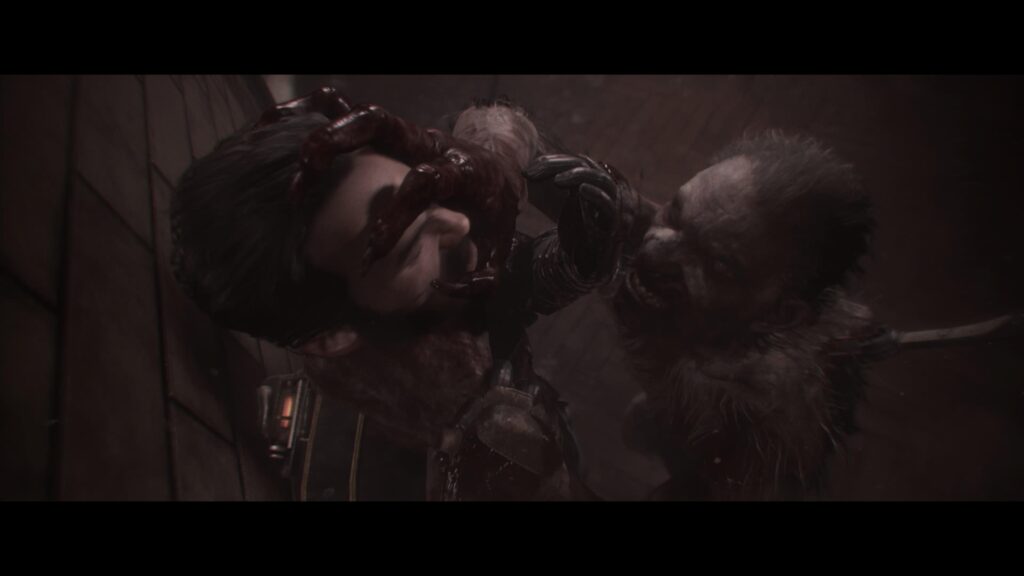
For the most part, it’s a classic 3rd person over-the-shoulder shooter, with some fun weapons and accessories that do make combat enjoyable. The combat difficulty never really spikes, however you do find yourself frustratingly short on ammo in the most inconvenient times. The checkpoint system does mean that should that stray bullet or grenade put you down, you don’t have to go back too far, thankfully. The one time this is no help is when you’re forced into stealth mode and have to clear out enemies on the map to progress. One mission in particular later in the game sees you in the grounds of a mansion, and having to dispatch guards that you haven’t got any idea where they are, apart from a little glow from their torches. Inevitably you’ll have to work out a path to success because from nowhere you’ll be spotted and trigger the mission-ending one shot of a pistol that kills you… when you’ve just survived a tidal wave of bullets from machine guns and not being blown to bits by rocket launchers, in previous missions, you can understand why a player may take anger at the suggestion one pistol bullet would kill Galahad!
Something else I would have LOVED to see more of Nikola Tesla in the game however – whether it was developing new electrified steampunk weapons, or perhaps acting as the ‘Q-labs’ equivalent of Victorian London, and offering essential tools or accessories for each mission… it was teased, and the groundwork had been done, but so sad that it never really came to fruition. Any kind of progression or upgrade system too would have been great, a feeling of really moving forward in Galahad’s experience and a better understanding of his foes and the threats would have kept the players more in sync and feeling like they were also learning.
For me though, the biggest issue with The Order: 1886 is the all-too-familiar linear map design. Fine for the scenes you HAVE to walk down the paths to absorb all of the exposition fed at you through open dialogue, but when into the action, other than the odd balcony that gives you elevation there is just no exploring or puzzle-solving involved. I understand this may have been to help keep the story moving back in 2015, but in a time when Baldur’s Gate 3 is cleaning up at The Game Awards, the gaming experience has evolved and this pigeon-holing will make players bored.
On the whole, the gameplay has some flavour and uses some techniques very well, but is let down by frustrating and somewhat boring designs elsewhere.
Graphics/Sound
The team responsible for bringing the game to life, it must be said, did a fantastic job. The graphics can hold up today against most AAA titles on the PS5, and the sound team including the incredible cast of voice actors, all played a pivotal role in the telling of such a detailed and emotionally driven story. The colour scheme perfectly captures the Victorian Gothic/Steampunk blend, with Tesla’s telling blue and copper laced into everything. London feels both incredibly and instantly recognisable, yet completely different and the intricacy of the designs and soundboarding both play into this in great detail.

There’s a huge cast of actors behind the voices too, and it was essential that these guys all delivered to the highest level to help bring this story to life, and for the most part they all did. There are no real weak links, and whilst some characters lean into stereotypes more, that actually adds some semblance of recognition and storytelling in itself. Hearing a load of Standard British accents can be dull, let’s be honest, but the team here brought variety and performance to ensure that was never the case!
There is, however, one thing that not all gamers will enjoy – as you’ll see in the screengrabs the game is played in a letterbox format, meaning you’ll have to get used to seeing big black bars at the top and bottom of your screen. Again some may argue that this adds to the cinematic experience, however, I would have much rather utilised the fullscreen and been able to see those terrifying lycans spread right across my 50′ screen, not just 75% of it…
Replayability
Now then, what can be said of replayability for a game that is so determined to tell a linear story well… sadly there isn’t any unless you want to relive the story in all of its glory and look for any hidden suggestions of where the game was going to go (I couldn’t find many that I didn’t notice in the first playthrough, I’ll be honest!). The game very much feels like it doesn’t expect you to immediately play it again with new focus and vigour either, there’s no New Game + mode, no difficulty modifiers or anything else that encourages you to play again. Even the collectables that you can find in most chapters, don’t feel very important or worthwhile and there’s no encouragement by the developers for you to try and collect them all. The Order: 1886 set out to be like a movie, and that movie doesn’t want or need you to want to keep re-watching it, just to enjoy it the one time you sit down with it!
King Arthur and his Knights
It doesn’t feel right reviewing The Order: 1886, and not dedicating a bit of the review to look at how the team took perhaps the most iconic and internationally recognisable figures in English legend, twisted it with their version of the Holy Grail, and sprinkled some much-needed lycanthropy over it all! For me, I always love seeing how a fictional world incorporates real-world myth and legend into the story, in this case, it is how the premise of King Arthur and his Knights of the Order would live on, centuries after the actual King Arthur would have passed. We’ve seen it on the big screen recently in the Kingsman film franchise, which cleverly utilised the titles of Arthur’s trusted companions as a recognition of the welcoming recruits into the service. The same is used in The Order: 1886, whereby apprentices are moulded by their mentors to take a seat at the table as another Knight of the Order passes, we see the Marquis de Lafayette promoted in this manner during the game, clearly those who take these seats do so with a lifelong commitment, and the honour is sacred despite the general public never knowing of this secret organisation. But is the Table so sacred as it all seems? It is a question both the Kingsman franchise and The Order: 1886 ask… and it’s for you to find out!
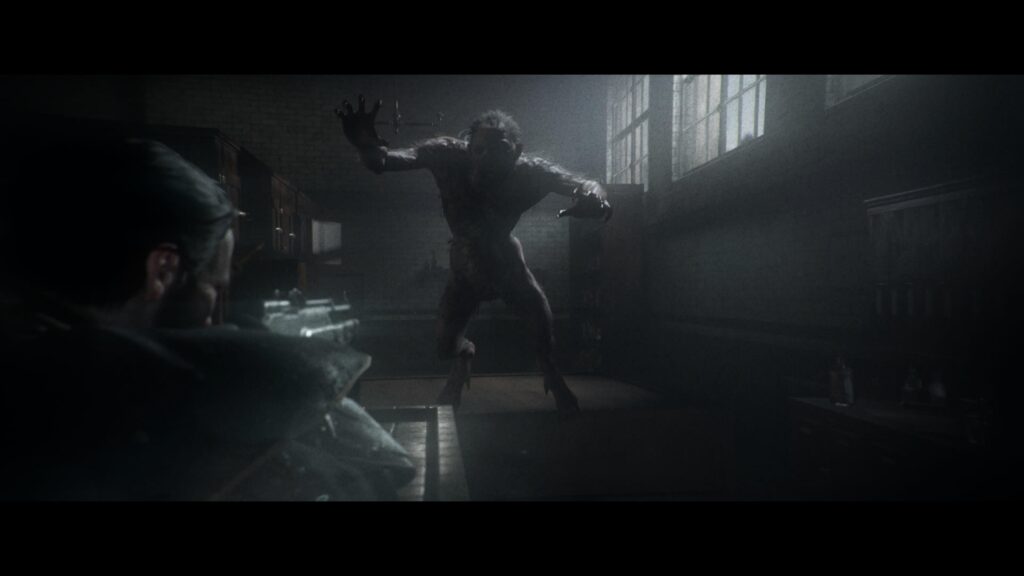
Conclusion
If you’re looking for a game that takes you on a predetermined story, and tells it through brilliant voice acting and a thoroughly well-designed world, you’re onto a good start with The Order: 1886! You cannot deny that there is a great storyline and the developers wanted to immerse you in a story… just like other Santa Monica Studios games, but unlike those other games, the level designs are rigid, slow, repetitive and at times, plain boring. For lovers of a story, you may well be able to overlook these – I am happy to say that I did, and the final chapters tie everything together nicely if you’ve committed yourself through the sluggish middle. If you’re looking for a high-octane, gun-toting shooter against enemies human and otherwise, where a story may lack but energy does not, then this title isn’t for you.
Can you see how the critiques and lessons from The Order: 1886 influenced later Santa Monica Studios titles… absolutely!!
Joys
- Deep storyline
- Victorian Gothic atmosphere
- A unique spin on the classic Vampires & Werewolves tale
Cons
- Linear level design
- Slow paced at times
- Zero replayability value

